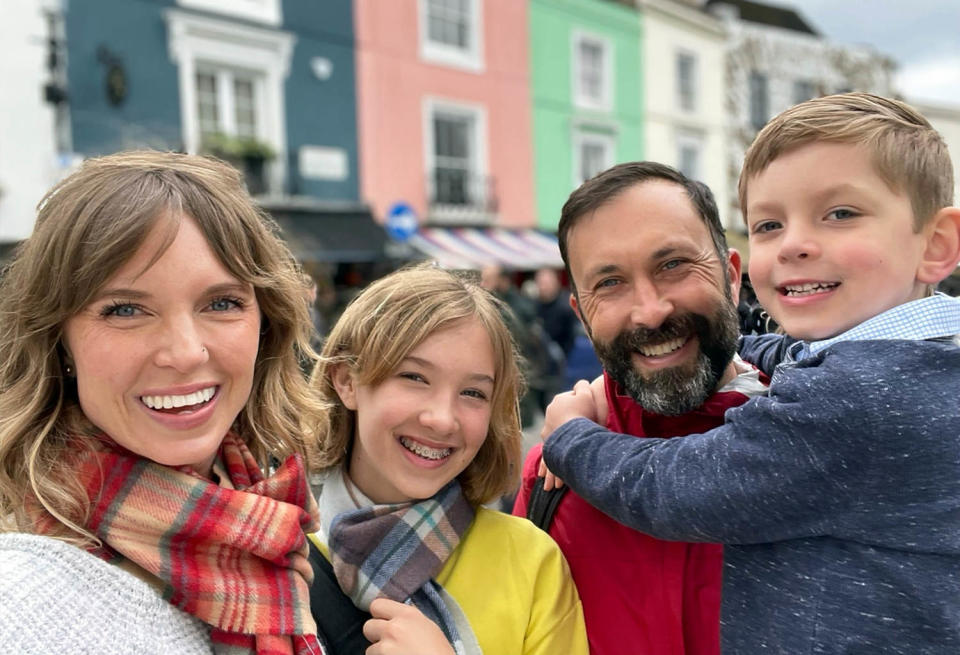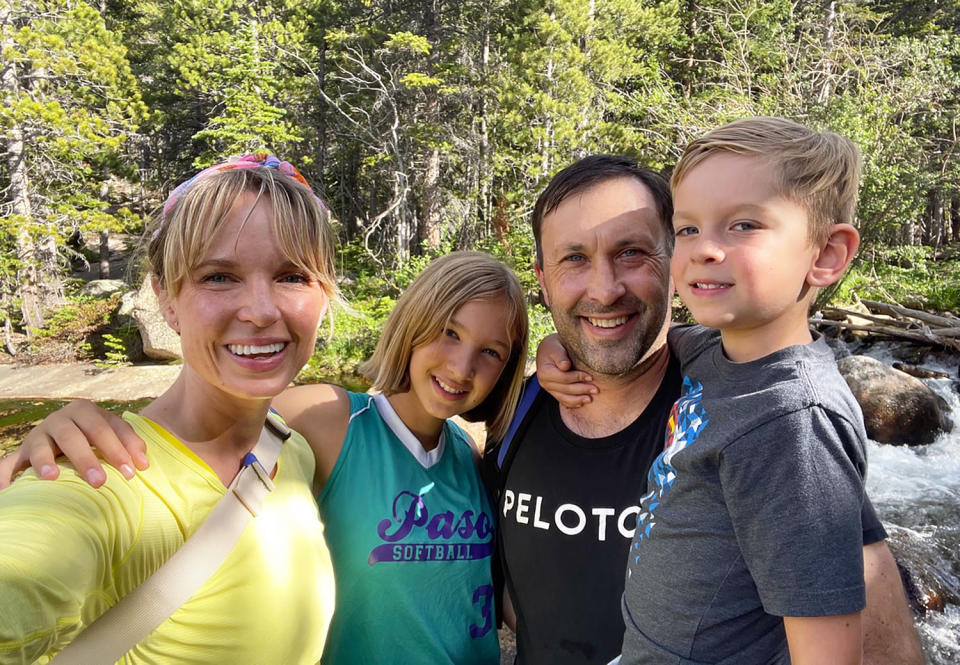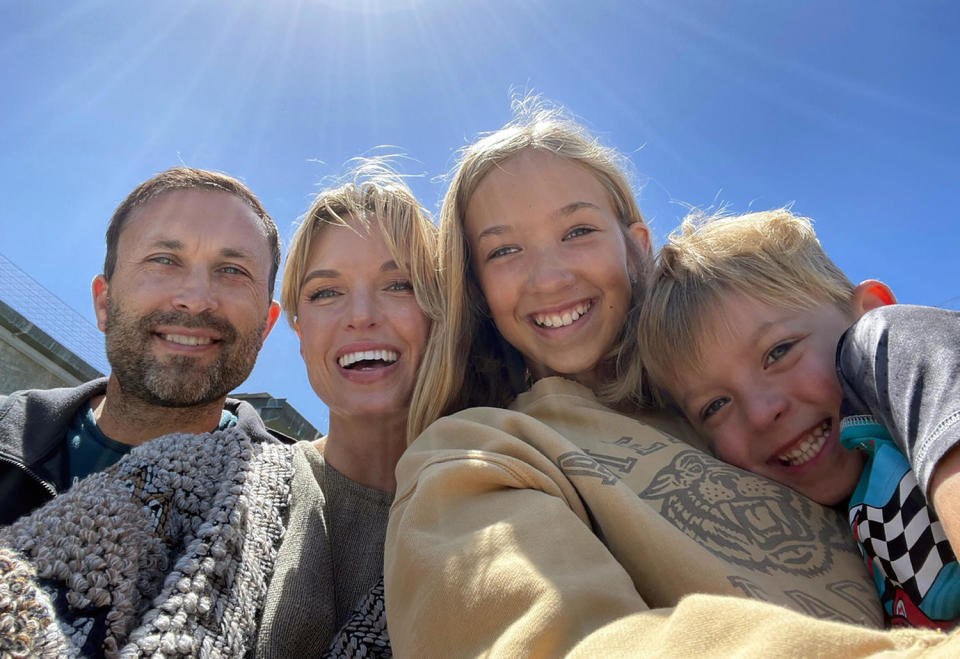The day I let my teenager see me cry
One day during school pick-up, my 13-year-old daughter was being harsh and impatient with me. This wasn’t a new behavior, yet on this occasion — to my own surprise — I noticed myself beginning to cry. Embarrassed and through tears I said, “I don’t know why you’re being so harsh with me, but if you’ll tell me what’s going on I’d like to help.” My 13-year-old immediately softened and we shared a tender conversation — another surprise, considering how the ride home started.

Later that day, reflecting on the surprise tears he witnessed from the backseat, my 7-year-old noted that “I’ve seen you cry from happiness or laughing a lot, but I didn’t know that you cried when you’re sad, too.” (His observation shook me, and I’ll get into why in a moment.)
When I caught myself crying in the school pick-up line, I felt deeply embarrassed by a few things at once: for being so caught off guard by my own feelings, for being this affected by my teenager’s typical moodiness, but most of all for crying in front of my children. But in the hours and days since then I’ve realized that rather than feeling embarrassed, I’m actually grateful for my surprise eruption of emotion. It was the beginning of a moment of deep connection with my children and the catalyst I needed to rethink the example I’m setting of how to safely communicate emotions — even and especially the difficult ones.
I’m always reassuring my children that there are no “bad” emotions, and encouraging them to share their difficult or scary emotions along with me, but I see now that I wasn’t modeling that practice with my own behavior.

There’s nothing like becoming a parent to cast a fresh and incisive light on your own childhood, revealing the ways you learned to cope with your family of origin’s unique culture and ways of relating to each other.
My family of origin is an extremely tough bunch. Generations of fleeing violence, fighting in wars, and immigrating and starting over (and over) again produced a stock of frigidly stoic, thick-skinned survivors. I can see how my relatives’ stoicism served them well, and I’m a direct beneficiary of their tenacity. To their credit, I’m living their dream: My family is safe and fed, and my children are able to play and enjoy childhood. But my family’s culture of toughness wasn’t without its drawbacks — alcoholism and substance abuse, a tendency to be quick to anger, and a belief that children are to be “seen and not heard” made for a chaotic, unsentimental and often violent household.
Crying was an indication of weakness. As a child, my learned ability to keep a stiff upper lip enabled me to survive, but in my adult life of relative security, safety and unconditional love, that same practiced equanimity is now a burden that keeps the people I love most at a distance.

Starting in my teens and into my 40s, I’ve done a lot of work both in therapy and on my own, and I’ve come a long way in my ability to hear and value my own emotions. My belief now is that all of our emotions, even and maybe especially the difficult ones, are full of useful information for anyone with the courage to listen to them.
As my 7-year-old astutely observed, in joyful moments I’m effusive with emotion: weeping with joy, laughing shamelessly loudly, stopping to savor the glorious pleasure of beautiful landscapes and little miracles of the weather. But with difficult emotions I’d grow distant, insisting on processing whatever was bothering me by myself before I dared to share it out loud — sanding off the splintery edges into a toneless form of therapyspeak. While well intended, this carried the consequence of signaling to my children that “hard” emotions are off limits for expression. My stoicism with my own tough emotions was modeling a hypocritical attitude of “do as I say, not as I do.”
I never want my children to be scared of my feelings or feel responsible for them as I did as a child, but in an effort to cultivate a safe and nurturing environment, I overcorrected. I want my children to know I’m a real flesh-and-blood human — that I know what it feels like to have your feelings hurt, to feel wronged, to be disappointed, and that they can always come to me for comfort or a listening ear. But until my surprise tears in the school pick-up line, they’d never once seen me actually feel hurt.

Since that day in the car I’m noticing when I censor my emotions around my children (it’s often), and I’m trying to be more open with them in the moment. Children have an intrinsic sense for the feelings in a room anyway — giving my difficult emotions a voice puts a name to what they’re already sensing, and gives all of us permission to talk about it.
I’m not doing it perfectly — like any new habit, it’ll take time to become natural — but I’m already seeing the effects my increased vulnerability has on the tone of our home. Everyone has been more tender with each other and softer when emotions run hot. I smile, thinking how safe and secure child-me would have felt in this environment, and I feel proud of the work my family is doing to embody tenderness amidst our strength, and care alongside our resilience.
This article was originally published on TODAY.com

